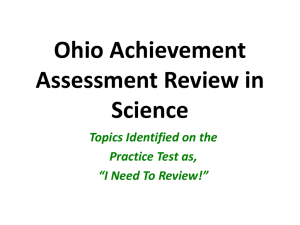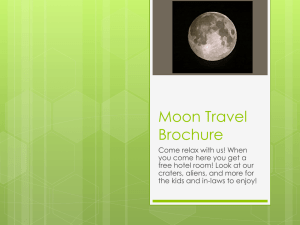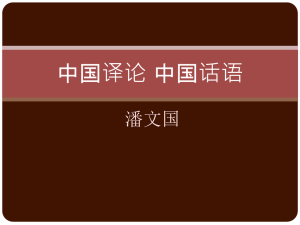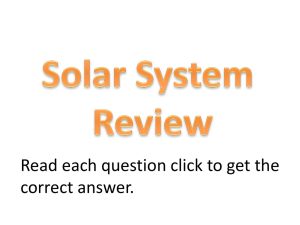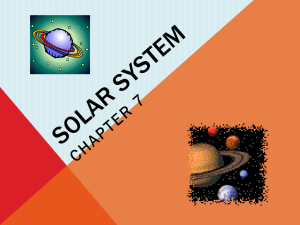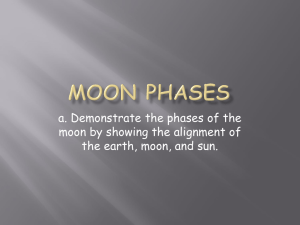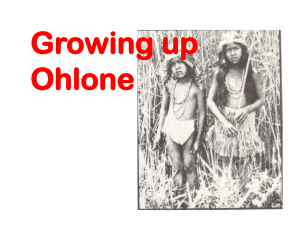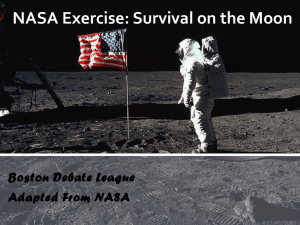Review PPT - Moon, Earth and Dating
advertisement
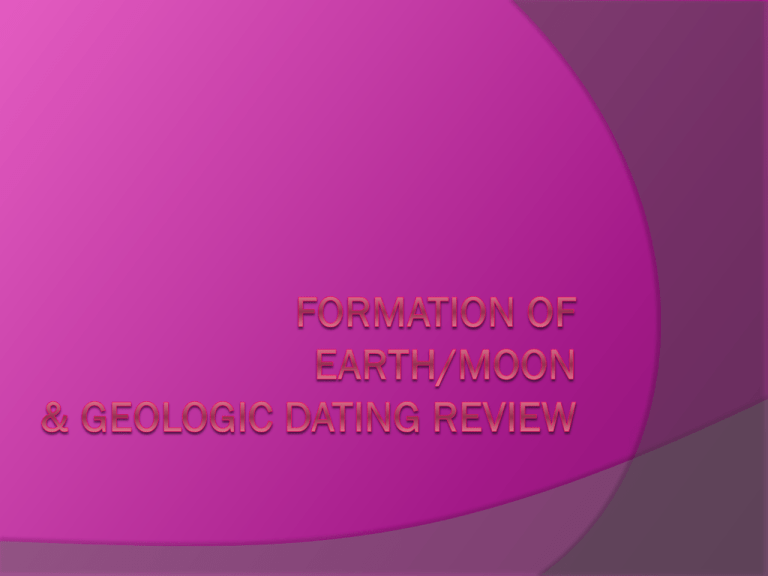
1. Archaeologists use the half-life of _____ to date organic materials. A.carbon-12 C.carbon-14 B.uranium-235 D.uranium-238 2. Radioactive materials have unstable A.electrons. C.protons. B.nuclei. D.neutrons. 3. The process of nuclear change in an atom of radioactive material is called A.radioactive decay. C.nuclear mass. B.isotopes. D.radon. 4. Nuclei with too many or too few neutrons are A.never found. C.unnatural. B.unstable. D.stable. 5. In radioactive decay, with each halflife, half the remaining sample decays to form another A.nucleus. C.life-form. B.element. D.proton. 6. All planets in the solar system revolve around A.the sun. C.Jupiter. B.Earth. D.Mars. 7. The moon orbits A.Earth. C.Saturn. B.the sun. D.Mercury. 8. Tides on Earth are caused primarily by A.the moon’s gravitational force. C.Earth’s landscape. B.the sun’s gravitational force. D.Jupiter’s gravitational force. 9. _____ is the only planet in the solar system known to sustain life. A.Uranus C.Earth B.Mercury D.Pluto 10.Earth’s atmosphere protects it from A.high-energy solar particles. C.space debris. B.ultraviolet radiation. D.All of the above 11.Astronomers believe _____ was originally a part of Earth. A.the sun C.Jupiter B.the moon D.Mars 12.According the current theory, the moon was formed A.together with Earth. C.from a portion of Earth. B.separately from Earth. D.from leftover matter. 13.The moon’s surface is covered with A.craters. C.ice. B.oceans. D.an atmosphere. 14.When the moon is full, the _____ is between the _____ and the _____. A.moon, sun, Earth C.Earth, moon, sun B.sun, Earth, moon D.moon, sun, Mercury 15.The age of our solar system is approximately A.2,000 years old. C.4.6 billion years old. B.46 billion years old. D.13.7 billion years old. 16.A rock that strikes the Earth is called a A.meteor. C.meteoroid. B.meteorite. D.All of the above 17.During a solar eclipse A.the moon blocks out the sun. C.the moon blocks out Earth. B.the sun blocks out the moon. D.Earth blocks out the sun. 18.During a lunar eclipse A.the moon blocks out the sun. C.the moon blocks out Earth. B.the sun blocks out the moon. D.Earth blocks out the sun. 19._____ allow Earth to sustain life. A.Liquid water and an oxygen-rich atmosphere B.Animals and plants C.The moon’s craters and maria D.Ice and a methane-rich atmosphere 20.The principle that uses the position to determine the relative age of rock layers is called the A.law of cross cutting C.law of superposition B.Newton’s Law D.law of horizontality 21.Half lives are used to determine the _____________ age of rocks. A.relative C.youngest B.absolute D.oldest 22.The principle that states that a layer of rock that cuts across other layers of rock is younger than the rock it cuts through is called the A.law of cross cutting C.law of superposition B.Newton’s Law D.law of horizontality 23. A wooden boat is found buried in the ocean. Scientists believe that timbers making up the boat had 10mg of carbon14 in them when alive. They now have 2.5mg of carbon-14. How old is the boat if the half life of carbon-14 is 5715 years? 24. Potassium-40 has a half-life of 1.3 billion years. If I have a sample which weighs 80 grams, how long will it take for the sample to have only 5 grams of potassium-40 left? 25. The half-life of thorium-230 is 2.25 million years. I have a sample which originally contained 20kg of thorium-230, but now only contains 5 kg of thorium230. How old is my sample?



